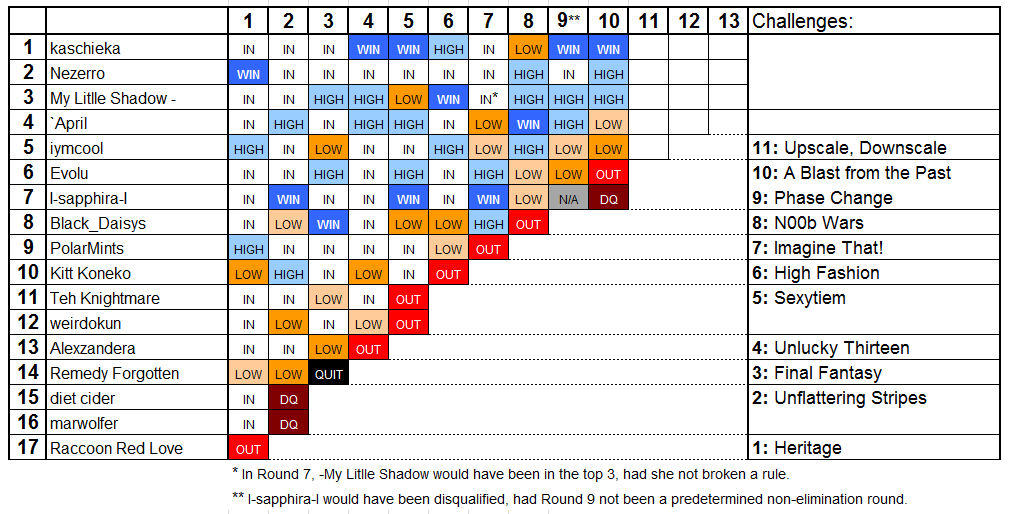I was bored, so I made a FAQ:
1. Why is the contest a strictly matching contest? Why not welcome other styles of avatar-making?
The judges appreciate other styles of avatars. However, the judges do not believe in their credibility to judge such avatars. Also, the judges believe that in a competition setting, a strict guideline for avatars must be upheld. Allowing different styles to a competition will subject different avatars in completely different rubrics, which the judges find unfair. This does not allow an objective comparison of avatars, in their view.
2. Why can’t the judges comment on drafts?
The judges feel that giving a contestant a comment on their draft will give him or her an unfair advantage over the rest of his or her competition. Obviously, the judges cannot give a comment on the drafts of ALL competitors. And even if it can be done, comments have varying degrees of helpfulness (thus unfairness) that is immeasurable and therefore cannot be regulated. Hence, the judges feel it would be much simpler to just withhold any comments before the official judging can commence.
3. Why a have Pixel Point system?
The judges find it unfair in some cases where consistently impressive contestants are eliminated by a single bad round, while some contestants who are always making unimpressive avatars outlast those who were doing better throughout the competition. To remedy this, the judges wanted to “choose” the eliminee once a bottom two was declared, picking out consistent high scorers to save or bottom scorers to eliminate. However, this approach would pose some problems. Contestants might criticize the method as being too biased. Thus, the judges devised a system that was quantifiable, objective, and fair. And this later came in the form of the PP system.
4. Why does the contest use x/10 rates, instead of using a rubric?
The judges acknowledge the effectiveness of judging rubrics. However, the judges agree that rubrics are not effective in Pixel Pliancy, in particular.
First, rubrics point out aspects of a tektek to be graded separately. Avatars getting a perfect score in all these aspects are the only avatars deserving of a perfect score. In PP, the judges believe otherwise. Rubrics dictate these aspects of a tektek as if they were necessities to an avatar. The judges all agree that some aspects of an avatar may be sacrificed, if it meant making up for other aspects in return. For example, an avatar can be unoriginal (a factor in most rubrics) yet be executed very well.
Secondly, Pixel Pliancy has much diversity when it comes to its challenges. Some challenges call for precise matching, some call for strong theme, the use of a base, tell a story, create a character, be cohesive, etc. A rubric would not acknowledge the different requirements that these individual challenges would ask for.
Third, the judges feel that there are a lot of unacknowledged factors in rubrics (that do not warrant acknowledgement, because they are rarely present in avatars), but should affect scores just as much as matching, theme and the like. For example, judges may find that an avatar has “much thought put into its creation.” Innovation and persona are also some aspects that the judges find must be rewarded.
5. How come you don’t post entries in the front page as soon as you receive them?
The judges feel that doing so will give an unfair advantage to those that still have not submitted their entries. Entries in the front page will serve as a benchmark for other competitors to try and top.
Although it is true that most competitors opt to post a draft for comments in the thread, the judges acknowledge that not everyone wants to do so and may want to keep his or her drafts private until being sent to the judges.

































